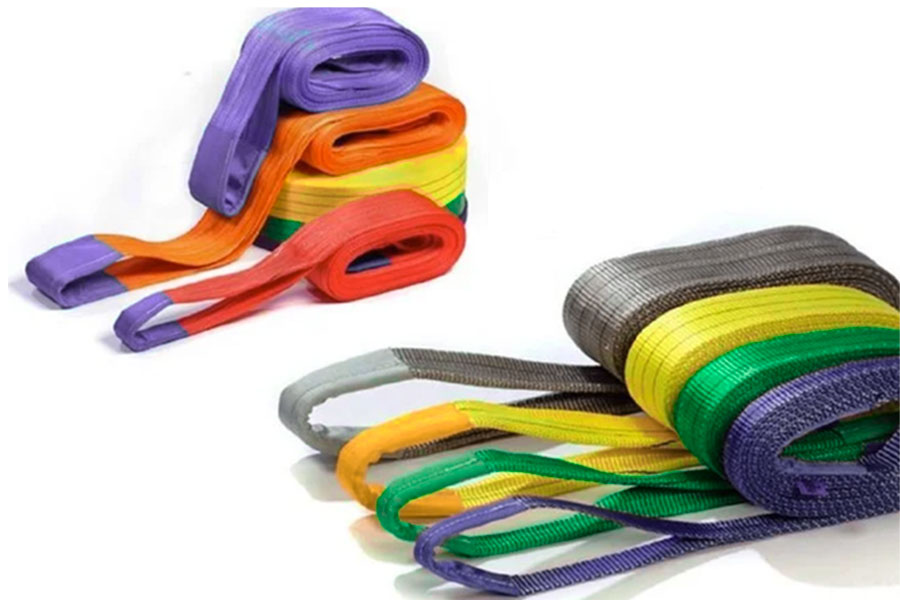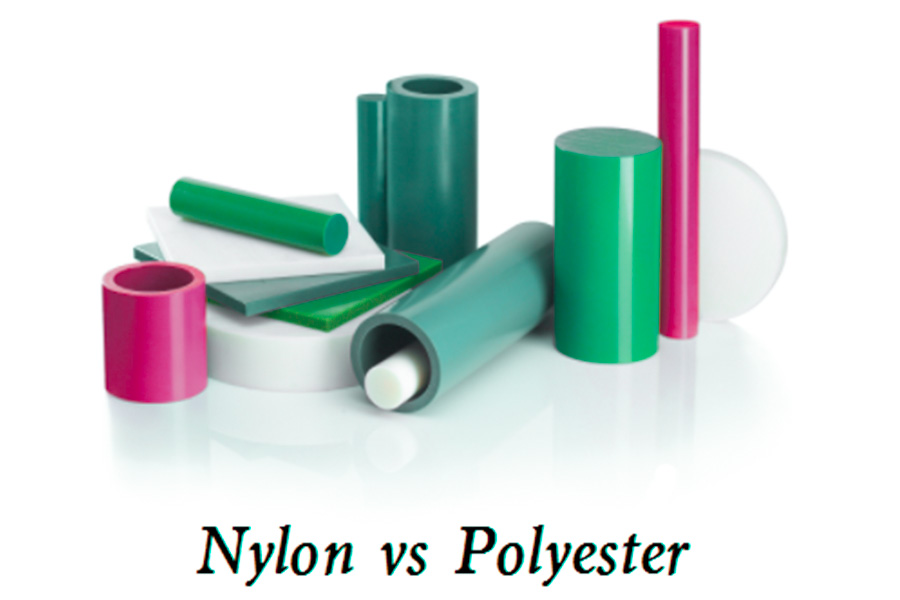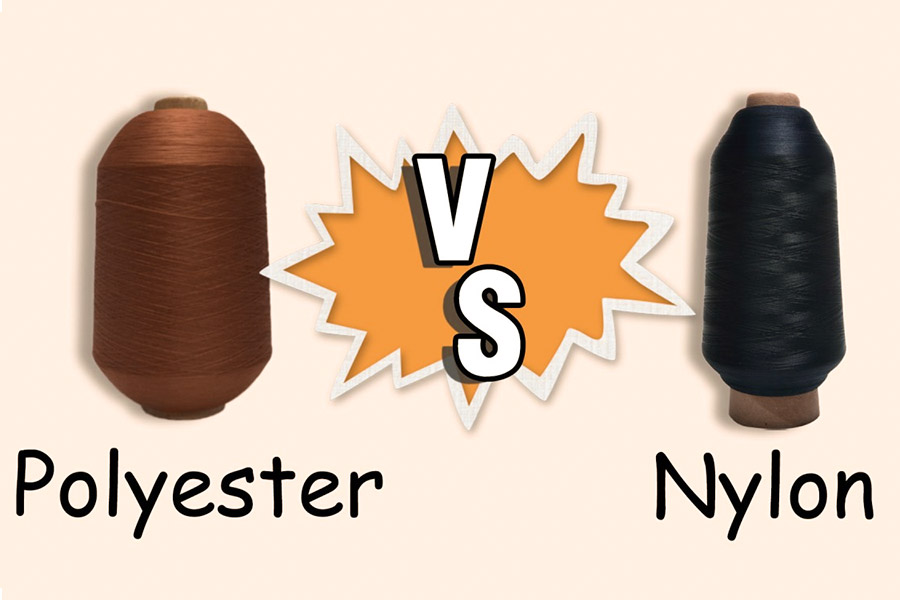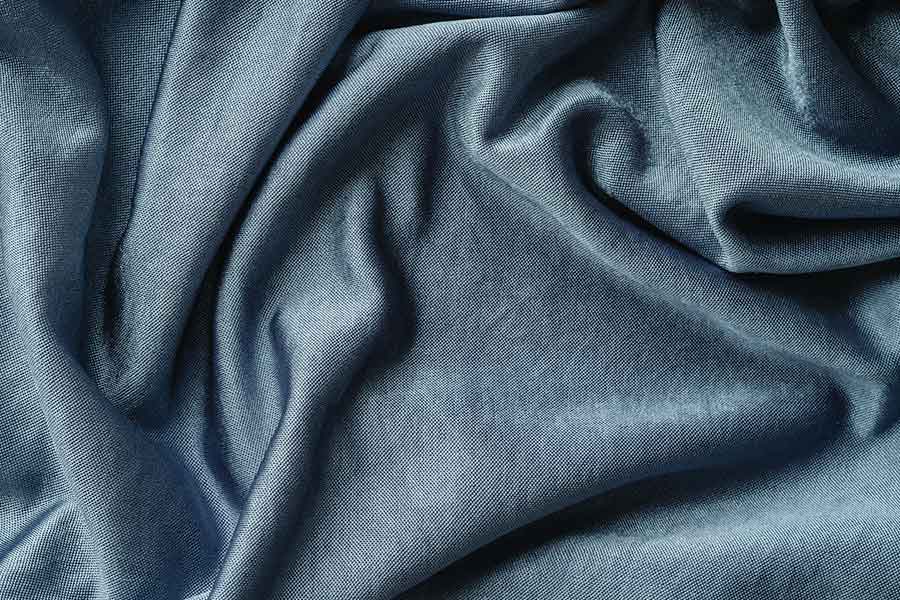In the field of textile and industrial materials, nylon (polyamide) and polyester (polyester) are two major representatives of synthetic fibers. Although they have common characteristics such as high strength, wear resistance and easy processing, they have significant differences in molecular structure, hygroscopicity, thermal stability and application scenarios. Nylon has become the first choice for sports equipment and industrial parts due to its excellent elasticity and wear resistance, while polyester dominates the daily clothing and home textile market with its excellent wrinkle resistance and low cost. This article will deeply analyze the chemical composition, physical properties and applicable fields of the two to help readers make accurate judgments when choosing materials.
What is Nylon?
Nylon is a generic nomination for a family of synthetic polymers. It is composed of polyamides i.e., repeating units linked by amide links. It is a thermoplastic and very silky material that can be melt and processed into fibres, films, or shapes. Nylon polymers can frequently be mixed with a broad variety of additives to achieve many different property variations.
What are the types of nylon?
Nylon is divided into several categories according to its chemical structure. The common ones are:
| Type | Chemical composition | Features | Typical applications |
|---|---|---|---|
| Nylon 6 (PA6) | Caprolactam polymerization | Good elasticity, easy processing, strong hygroscopicity | Textile fibers, fishing nets, packaging films |
| Nylon 66 (PA66) | Hexamethylenediamine + adipic acid polymerization | High strength, high temperature resistance, excellent mechanical properties | Auto parts, industrial gears, bulletproof vests |
| Nylon 610 (PA610) | Hexamethylenediamine + sebacic acid polymerization | Oil resistance, chemical corrosion resistance | Precision mechanical parts, cable sheaths |
| Nylon 1010 (PA1010) | Decanediamine + sebacic acid polymerization | Low hygroscopicity, good dimensional stability | High-end engineering plastics, 3D printing materials |
| Aromatic nylon (such as PA6T, PA9T) | Contains benzene ring structure | Ultra-high heat resistance (>300℃) | Aerospace, electronic packaging |
What are the characteristics of nylon?
The main characteristics of nylon are:
- High strength: tougher than natural fibers (such as cotton and wool), with excellent tensile resistance.
- Abrasion resistance: low friction coefficient, suitable for making parts with frequent friction (such as gears and ropes).
- Good elasticity: can return to its original shape after stretching, not easy to deform.
- Chemical resistance: has certain resistance to oil, alkali and weak acid, but strong acid will corrode nylon.
- Hygroscopicity: nylon 6 has a moisture absorption rate of about 4.5%, and nylon 66 has a moisture absorption rate of about 2.5%, which affects dimensional stability.
- Not resistant to high temperature: the melting point of ordinary nylon is about 215-265℃, and it is easy to age under long-term high temperature.
- Easy to static electricity: static electricity is easy to accumulate in a dry environment, and antistatic treatment is required.
What are the advantages and disadvantages of nylon?
✔ Advantages
- Lightweight and strong: The specific strength (strength/weight ratio) is higher than that of metal, suitable for replacing some metal parts.
- Good processing performance: It can be formed by various methods such as injection molding, extrusion, spinning, etc.
- Fatigue resistance: It is not easy to break after repeated bending, suitable for sports equipment (such as climbing ropes).
- Good dyeability: It can be dyed with acid dyes and has bright colors.
✖ Disadvantages
- Degradation of performance after moisture absorption: The strength decreases after water absorption, and the size may change.
- Ultraviolet sensitivity: It is easy to turn yellow and brittle after long-term exposure to the sun, and anti-UV agents need to be added.
- High cost: Compared with polyester, nylon raw materials and processing costs are higher.
What are the uses of nylon?
Clothing: Nylon is a common apparel option, especially in sportswear. Nylon is regarded as the best choice for sportswear for its high strength, excellent water resistance, good elasticity and wear resistance.
Car parts: In automotive parts, nylon is widely used for its excellent strength and good heat resistance. Such as plastic skeleton materials, it is the most basic and the most widely used material for manufacturing automobile parts. Nylon is often applied to the engine cover, fuel pipe, and parts of the dashboard.
Gear wheels:In gear manufacturing, nylon synthetic materials are widely used because of their low friction coefficient and excellent wear resistance.
Bearings: Nylon bearings are very common in a variety of application scenarios because of their low friction force and excellent wear resistance.
Fixtures: Nylon fixtures are very common during manufacturing and assembly because of their excellent durability, scratch resistance, and collision resistance.
Engineering plastics: In the field of engineering plastics, nylon, as a synthetic material, is widely used in the manufacturing of engineering plastics because of its excellent strength, flexibility, high temperature resistance and convenience of processing.
What is polyester?
Polyester (polyester fiber, Polyester), chemical name polyethylene terephthalate (PET), is the world's largest synthetic fiber, accounting for more than 70% of the total output of synthetic fibers. It is made by polycondensation of terephthalic acid (PTA) and ethylene glycol (EG), and has the characteristics of high strength, wrinkle resistance, chemical corrosion resistance, etc., and is widely used in clothing, home textiles, industry and other fields.

What are the types of polyester?
Polyester can be divided into many types according to its use and performance characteristics:
| Type | Features | Typical applications |
|---|---|---|
| PET (conventional polyester) | High strength, low moisture absorption, easy to dye | Clothing, bottle flakes, packaging film |
| PCDT (high elastic polyester) | Elasticity is better than PET, good rebound | Sportswear, underwear, stretch fabrics |
| Recycled polyester (rPET) | Made from recycled plastic bottles, environmentally friendly | Sustainable clothing, shoes, backpacks |
| Cationic dyeable polyester | Can be dyed with cationic dyes, bright colors | High-end fashion, home textile fabrics |
| Flame retardant polyester | Add flame retardants, high temperature resistance | Fire suits, curtains, car interiors |
What are the characteristics of polyester?
The main characteristics of polyester are:
- High strength: high breaking strength, stretch resistance, not easy to tear.
- Good wrinkle resistance: strong fiber rigidity, not easy to deform after washing, no ironing required.
- Chemical corrosion resistance: acid, alkali, solvent resistant, suitable for industrial use.
- Low moisture absorption: moisture regain is only 0.4%, quick drying, but easy to generate static electricity.
- Good light resistance: better UV resistance than nylon, suitable for outdoor use.
- Poor air permeability: low moisture absorption, stuffy wearing, need to be improved by blending.
- Easy to pilling: the fiber surface is smooth and easy to pilling after friction.

What are the advantages and disadvantages of polyester?
✔ Advantages
- Low cost: cheap raw materials, high economic efficiency of large-scale production.
- Easy care: no deformation after machine washing, fast drying, suitable for fast fashion clothing.
- Strong weather resistance: UV resistance, oxidation resistance, suitable for outdoor textiles.
- Recyclable: recycled polyester (rPET) is environmentally friendly and reduces plastic pollution.
✖ Disadvantages
- Poor comfort: weak moisture absorption and perspiration ability, hot and stuffy in summer.
- Flammable: flame retardants need to be added to be used for fireproof materials.
- Difficult to degrade: traditional polyester takes hundreds of years to degrade naturally, and environmental pressure is high.
What are the uses of polyester?
(1) Clothing industry
- Daily clothing: T-shirts, shirts, jackets (wrinkle-resistant, easy to care for).
- Sportswear: blended with cotton to improve moisture absorption, used in sportswear, yoga pants.
(2) Home textile products
- Bedding: quilt covers, sheets (wrinkle-resistant, durable).
- Curtain & sofa fabrics: sun-resistant, not easy to fade.
(3) Industrial applications
- Tire cord: high-strength polyester is used to strengthen tires.
- Conveyor belts & industrial filter cloths: corrosion-resistant, wear-resistant.
(4) Packaging materials
- PET plastic bottles: beverage bottles, cooking oil bottles (transparent, lightweight).
- Packaging film: food cling film, insulation film.
(5) Environmentally friendly materials
- Recycled polyester (rPET): recycled plastic bottles are made into environmentally friendly shoes, clothing, and backpacks.

Nylon vs. Polyester: Differences and Similarities
In the field of textile and industrial materials, nylon and polyester are the most common synthetic fibers, each occupying an important position. LS will deeply analyze the differences and similarities of the characteristics of these two materials to help you make wise decisions when purchasing materials.
1. Comparison of core differences
(1)Chemical structure and raw materials
- Nylon (polyamide): contains amide bonds (-NH-CO-) in the molecular chain, and is formed by the condensation of diamine and dibasic acid
- Polyester (polyester): contains ester bonds (-CO-O-) in the molecular chain, and is made by the polymerization of terephthalic acid and ethylene glycol
(2)Physical properties
| Features | Nylon | Polyester |
|---|---|---|
| Hygroscopicity | 4.5%(high) | 0.4%(very low) |
| Strength | 4.2-5.8g/d | 4.5-6.5g/d |
| Abrasion resistance | Excellent (8000 times) | Good (5000 times) |
| Elastic recovery rate | 98% | 90% |
| Melting point | 215-265℃ | 260℃ |
| Light resistance | Poor (easy to yellow) | Excellent |
(3) Processing characteristics
- Dyeing: Nylon requires acid dyes (100°C), polyester requires disperse dyes (130°C)
- Setting: Polyester requires higher temperatures (180-200°C vs nylon 160°C)
- Antistatic: Polyester is more prone to static electricity and requires special treatment
2. Main similarities
Commonalities of synthetic fibers:
- High strength-to-weight ratio (3-5 times that of natural fibers)
- Resistant to microbial corrosion and not prone to mildew
- Controllable costs for large-scale production
Versatile modification technologies:
All can be achieved through copolymerization, nanocomposites, etc.:
- Antibacterial treatment (silver ions/copper ions)
- Flame retardant modification (phosphorus/nitrogen flame retardants)
- Conductive function (carbon nanotubes/graphene doping)
Recycling methods:
- Mechanical recycling: melt regranulation
- Chemical recycling: depolymerization to monomers and repolymerization
3. Material selection decision guide
Scenarios where nylon is preferred:
- Requires high elasticity (sportswear, swimsuits)
- High wear resistance requirements (climbing ropes, gears)
- Wet environment (quick-drying clothing)
Scenarios where polyester is preferred:
- Large-scale production with limited budget
- Requires wrinkle resistance and ironing resistance (formal shirts)
- Outdoor weather-resistant products (awnings, advertising fabrics)
Mixed application solutions:
- 65% polyester + 35% nylon: balance between cost and performance
- Nylon outer layer + polyester inner layer: common structure of outdoor clothing
5. Comparison of environmental performance
- Difficulty of recycling: Polyester is easier to recycle
- Degradability: Both are difficult to degrade naturally
- Sustainable development:
- Nylon: Develop bio-based nylon
- Polyester: Promote recycled polyester (rPET)

Summary
As the two leaders in the field of synthetic fibers, nylon and polyester each exhibit unique performance advantages: nylon has become the first choice for high-performance applications due to its excellent elasticity, wear resistance and comfort, while polyester dominates the daily consumer goods market with its excellent wrinkle resistance, heat resistance and economy. Both are far superior to natural fibers in terms of strength, durability and easy care, but due to differences in molecular structure, they have their own characteristics in terms of moisture absorption, weather resistance and touch.
In actual applications, there is no absolute distinction between good and bad. The key is to make accurate choices based on specific needs, whether it is the pursuit of high elasticity in sports equipment, high strength in industrial parts, wrinkle resistance and shape retention in daily clothing, or sustainability of environmentally friendly products. With the advancement of material technology, innovative products such as modified nylon and recycled polyester are constantly expanding the application boundaries of both, providing consumers with more choices.
📞 Phone: +86 185 6675 9667
📧 Email: info@longshengmfg.com
🌐 Website: https://lsrpf.com/
Disclaimer
The content of this page is for informational purposes only.LS SeriesNo representations or warranties of any kind, express or implied, are made as to the accuracy,completeness or validity of the information. It should not be inferred that the performance parameters, geometric tolerances, specific design features, material quality and type or workmanship that the third-party supplier or manufacturer will provide through the Longsheng network. This is the responsibility of the buyerAsk for a quote for partsto determine the specific requirements for these parts.please Contact us Learn more information.
LS Team
LS is an industry-leading companyFocus on custom manufacturing solutions. With over 20 years of experience serving more than 5,000 customers, we focus on high precisionCNC machining,Sheet metal fabrication,3D printing,Injection molding,metal stamping,and other one-stop manufacturing services.
Our factory is equipped with more than 100 state-of-the-art 5-axis machining centers and is ISO 9001:2015 certified. We provide fast,efficient and high-quality manufacturing solutions to customers in more than 150 countries around the world. Whether it's low-volume production or mass customization,we can meet your needs with the fastest delivery within 24 hours. chooseLS TechnologyIt means choosing efficiency, quality and professionalism.
To learn more, please visit our website:www.lsrpf.com

FAQs
1.What is the difference between polyester and nylon?
The main difference between polyester (polyester fiber) and nylon (polyamide fiber) lies in the chemical structure and properties: polyester is made from polyethylene terephthalate (PET) and has excellent wrinkle resistance, heat resistance and low moisture absorption, suitable for daily clothing and industrial use; while nylon is synthesized from polyamide, has better elasticity and stronger abrasion resistance, but higher moisture absorption, and is often used in sports equipment, ropes and high-strength textiles. The two are similar in strength, but nylon is softer and polyester is more resistant to high temperatures.
2.What is the difference between nylon and polyester thread?
Nylon thread is elastic and abrasion-resistant, making it suitable for applications that require high toughness, such as sewing sportswear, outdoor equipment or fishing nets; while polyester thread is strong, has better UV resistance, and is not easy to absorb water, and is often used to make tents, canvas or products that need to be exposed to the sun for a long time. Nylon thread is softer and suitable for delicate sewing, while polyester thread is more resistant to high temperatures and suitable for industrial applications.
3.Which is more heat-resistant, nylon or polyester?
Polyester is more heat-resistant than nylon, with a melting point of about 260°C, while nylon's melting point is usually between 215-265°C (depending on the specific type). In addition, polyester is more stable in high-temperature environments and is not easy to deform, so it is often used in industrial textiles that require heat resistance or clothes that are ironed at high temperatures, while nylon may soften or degrade under continuous high temperatures.
4.Which is more expensive, nylon or polyester?
Nylon is usually more expensive than polyester (polyester), mainly due to differences in raw material costs and manufacturing processes. The production of nylon (polyamide) requires a more complex chemical synthesis process, and the raw material price is higher; while the raw materials of polyester (PET), terephthalic acid and ethylene glycol, are easier to obtain, and the large-scale production technology is mature and the cost is lower. Taking the market price as an example, the price of nylon fiber is about 30%-50% higher than that of polyester, and engineering plastic grade nylon (such as PA66) may even be 2-3 times more expensive than polyester. However, the specific price is also affected by the model (such as nylon 6 vs nylon 66), modification requirements (such as flame retardant/reinforced) and market supply and demand. Polyesters with special functions (such as recycled rPET or flame retardant polyester) may also be close to the price level of basic nylon.








